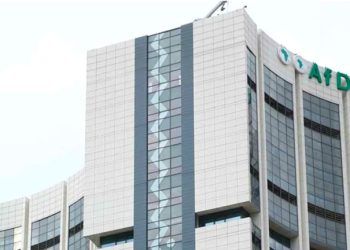
The Bank of Namibia (BoN) is widely expected to maintain the repo rate at 6.75% during its Monetary Policy Committee (MPC) meeting announcement on Wednesday, as analysts cite persistent inflationary pressures and heightened global economic uncertainty.
Danie van Wyk, Portfolio Manager at IJG Securities, said the central bank is likely to keep the benchmark rate unchanged, following the South African Reserve Bank’s (SARB) decision in March to maintain its repo rate.
“The SARB held rates steady at the March MPC meeting, leaving the rate differential between Namibia and South Africa unchanged at 75 basis points,†he said.
“The BoN has indicated it intends to close this differential over the medium term, making further cuts unlikely for now.â€
Van Wyk added that rising inflation in Namibia further supports the case for a rate hold, with annual consumer price inflation (CPI) increasing from 3.0% in November to 4.2% in March.
FNB Namibia Economist Helena Mboti echoed similar sentiments, pointing to elevated but contained inflation, resilient foreign exchange reserves, and a cautious policy stance as key reasons for the likely pause.
“While GDP growth for 2025 is projected above 4%, the recovery remains uneven, with limited traction across key sectors,†said Mboti.
Headline inflation in March came in at 4.2% year-on-year, exceeding FNB’s earlier forecast of 3.9%, largely driven by increases in food, alcohol and transport costs.
“We have revised our April inflation forecast to 4.2% and lifted our 2025 average forecast to 4.0%,†Mboti said, adding that persistent housing-related pressures and expected electricity tariff hikes remain inflationary risks.
She also noted that although the secondary sector has shown stronger-than-expected growth, weak household incomes continue to hamper private sector credit growth, which remains heavily skewed towards corporate lending.
“Foreign exchange reserves remain robust at N$63 billion, equivalent to 4.2 months of import cover, although potential trade disruptions and Eurobond maturities could pose risks in the second half of the year,†she added.
Meanwhile, research firm High Economic Intelligence (HEI) noted that market sentiment is split between a rate hold and a possible 25 basis point increase to 7.0%, citing inflation shocks from global and regional developments.
“These measures could reduce the competitiveness of Namibian products in the U.S. market, disrupt established supply chains, and weigh heavily on export earnings,†HEI said, referring to renewed U.S.-China tensions and the imposition of a 10% tariff on Namibian exports to the U.S.
“Given Namibia’s trade ties with South Africa through SACU and the currency peg, the effects may extend beyond direct exports, particularly where South African goods are embedded in local supply chains. This could lead to higher domestic inflation as firms raise prices to offset lost revenue.â€











